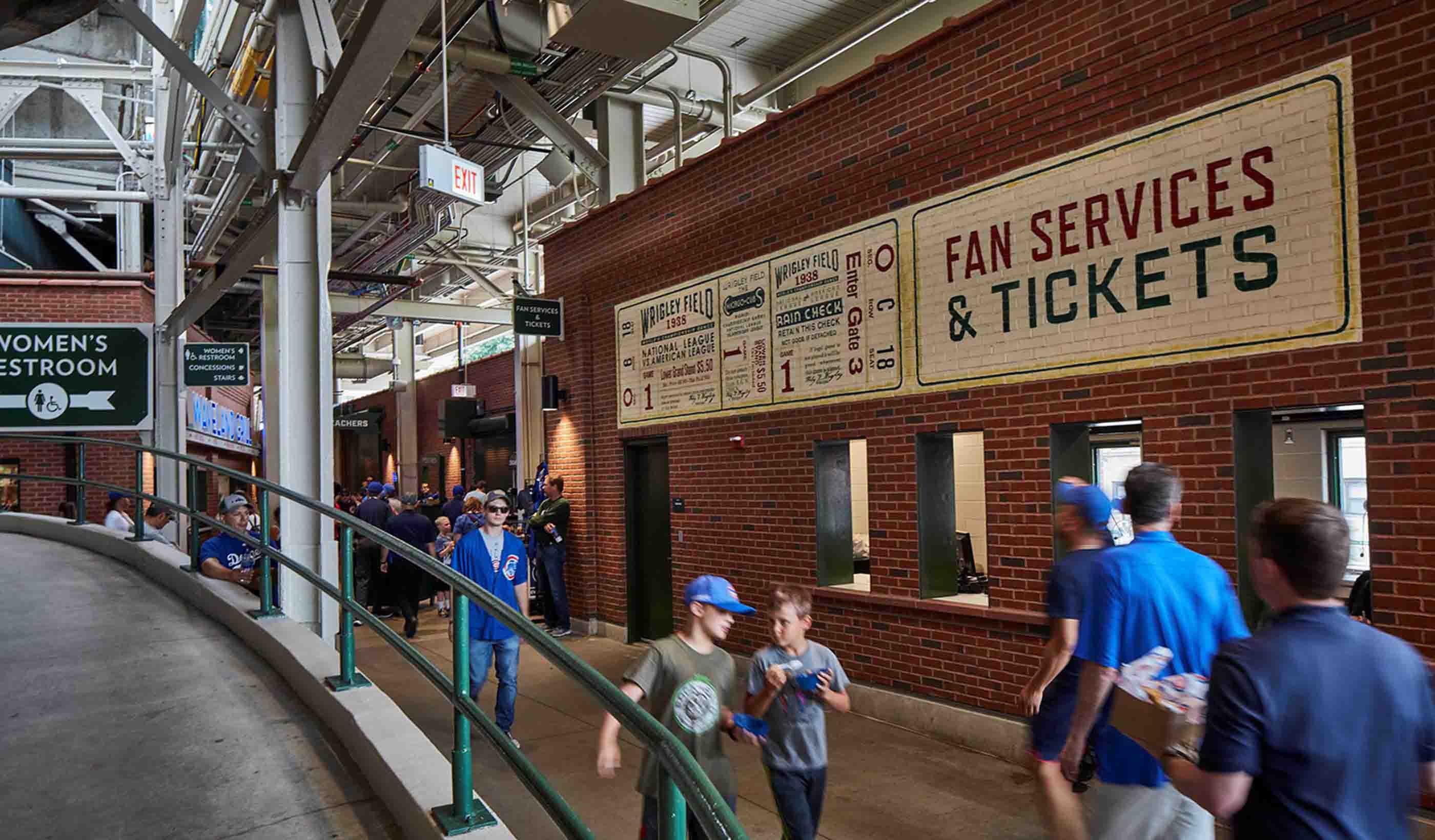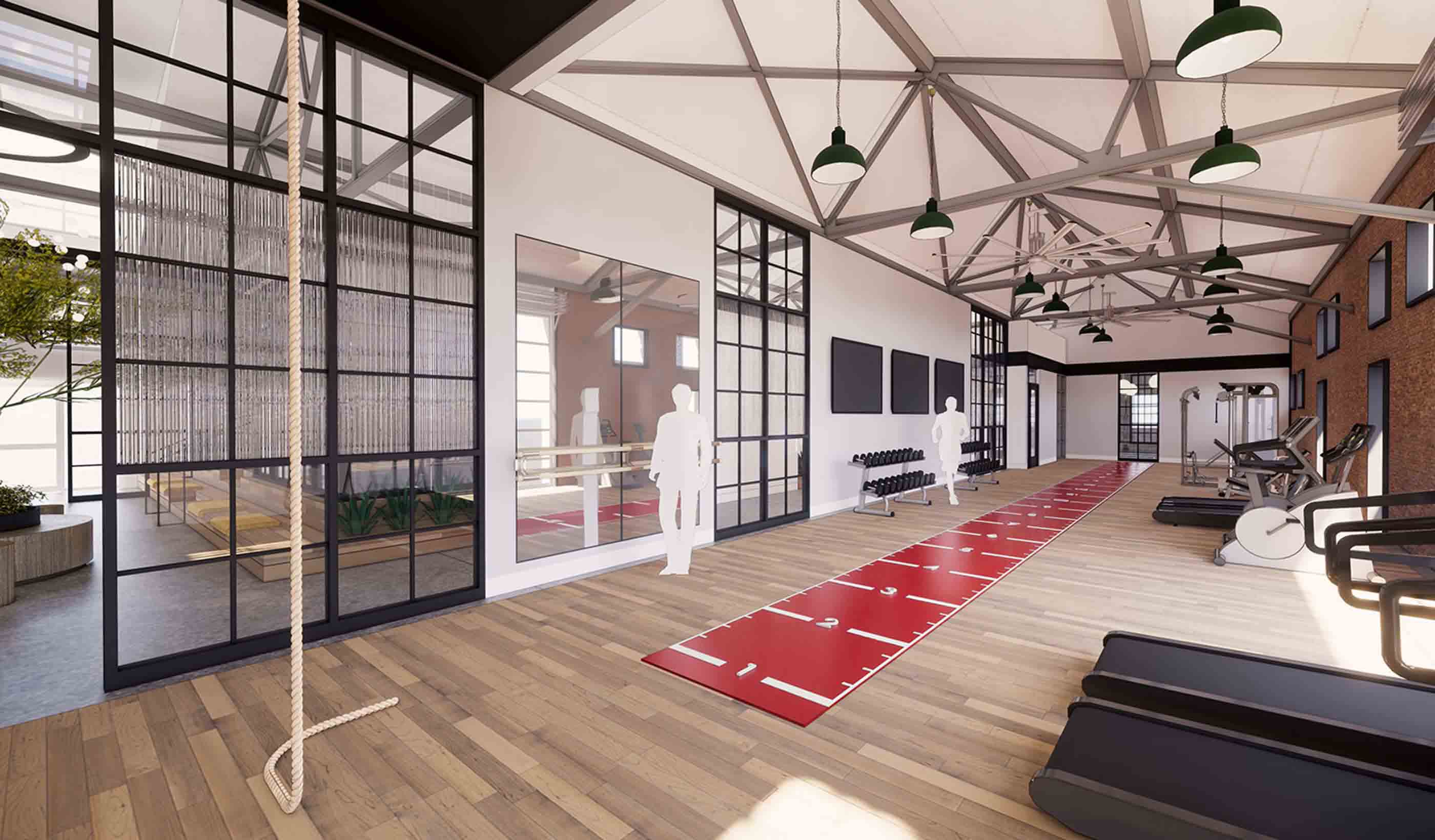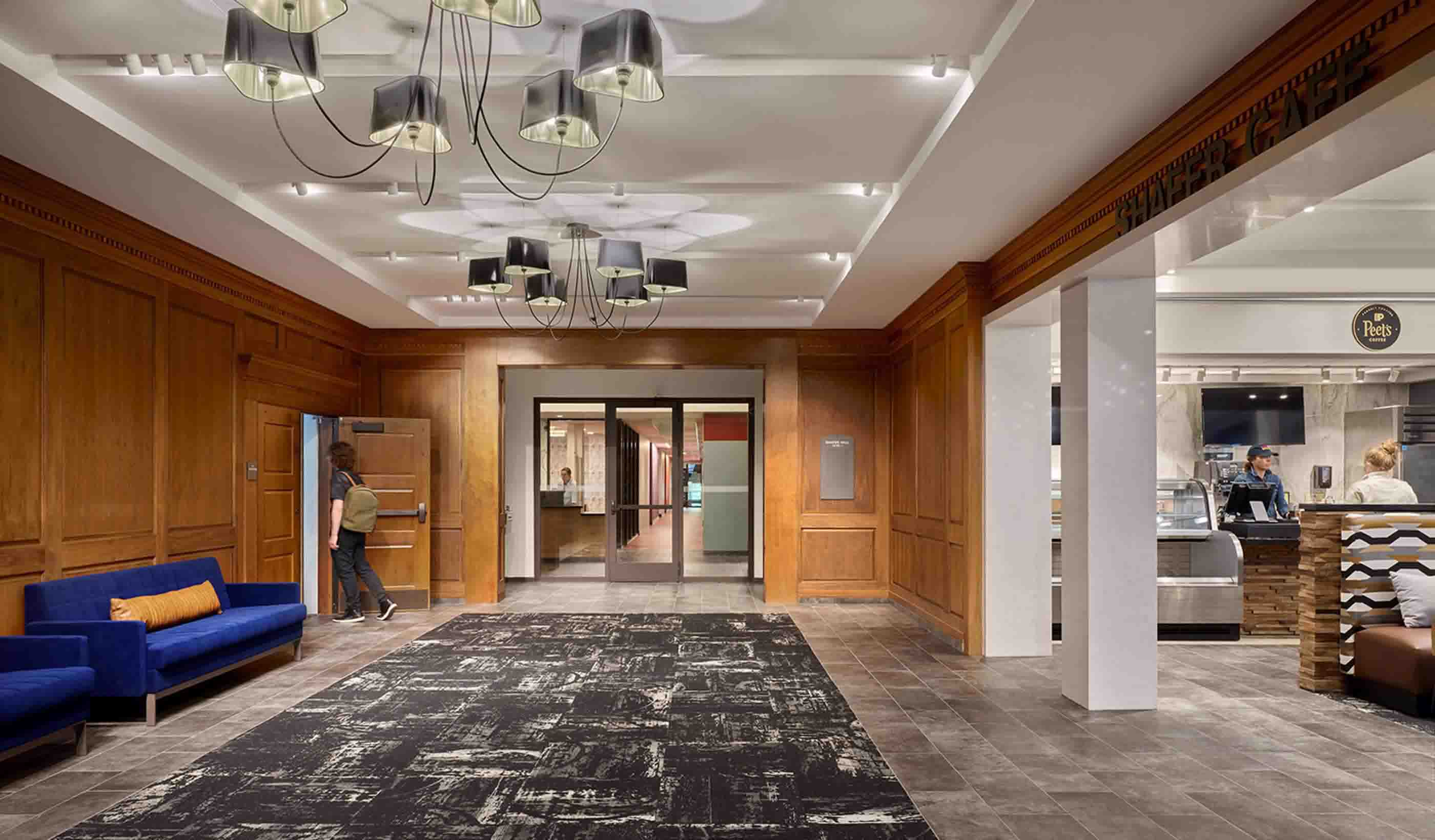3 reasons for adaptive building reuse
August 09, 2024
August 09, 2024
Heritage, space, and carbon are reasons for building reuse, creating hundreds of possibilities
A version of this blog first appeared as “Heritage, carbon, and space” in Design Quarterly Issue 21.
Repurposing buildings is having a new moment in the sun. For my team of designers with sustainability in mind, we believe there are good reasons to take a deep look at adaptive building reuse on your next project.
But there’s something happening today that suggests more urgency to this consideration. What is it?
There’s a growing desire for cities to preserve and develop their cultural capital. City planners have seen it work. And they want to activate neighborhoods and drive development in their own backyards. Similarly, many companies want to locate their offices in buildings with a story to tell—to build their brand and attract talent. Adaptive building reuse is a low-carbon choice they wisely want to align with their brand.

When designing renovations for the famed Wrigley Field in Chicago, Illinois, it was important to consider the historical importance of the baseball facility
The housing crisis in North America has given developers a reason to take a closer look at existing buildings. Some are repurposing office buildings as housing and malls for healthcare services. Cities such as Chicago and Los Angeles are promoting adaptive reuse of existing buildings like downtown office buildings for apartments. Building reuse is key to their strategy for reviving neighborhoods.
Organizations are ever more concerned with the carbon emissions from their buildings. It’s especially true with embodied carbon. Embodied carbon refers to the greenhouse gas emissions (GHG) from the production and transportation of building materials and construction. Corporate ESG (environmental, social, and governance) commitments and reporting push groups to limit their emissions. From an embodied carbon perspective, adaptive building reuse makes sense. It makes sense to make them more efficient rather than tear them down and build new ones.
The reasons we repurpose buildings can vary greatly from region to region. But three of the chief drivers making building reuse projects possible today are heritage, demand for space, and decarbonization. Each building reuse project presents a unique set of circumstances for designing and engineering.
People love the look and feel of older buildings. Many have been built with durable materials, some of which are absurdly expensive today. And some capture architectural styles that still speak to us. Maybe it’s classical ornamentation, sublime modernism, or industrial utility.
So, why not reuse aspects of the places we like? Through adaptive building reuse, we can maintain elements of the original design, our cultural heritage, and recognize the historical significance of the built environment.
... by honoring a baseball landmark
Wrigley Field needed structural improvements and new locker rooms. But this is Wrigley Field—a home to baseball since 1914. So, the renovation project had to respect that history. The final product? All the necessary improvements, but also the preservation of important historical elements of the famed Chicago Cubs ballpark. The ivy on the outfield wall is still there and so are historic buildings, such as its groundskeeper’s house.
... by giving a government building a new purpose
The Dallas Municipal Building is known as the location for the assassination of Lee Harvey Oswald in 1963. The six-story Beaux-Arts structure is both a National Historic Landmark and a Texas Historic Landmark. When it was time to modernize the building, our team was able to preserve the building’s historic aspects. The design makes it more efficient to serve its new mission as home to the University of North Texas Dallas Law School.

The Armory in Boulder, Colorado, is an adaptive building reuse that now serves as a new amenity space for a larger housing development.
... by adding some soul to the center of a new development
The Armory in Boulder, Colorado, is an adaptive building reuse of an old armory building. Now it serves as a new amenity space for a larger housing development. Our team sought to preserve and celebrate the history and character of the building while creating a modern and comfortable environment for the residents. We worked in conjunction with Mulhern, the architect of record, who oversaw the landmarks process and the envelope component of the project.
Roughly 80 percent of the buildings we have today will still exist in 2050. The kinds of spaces we need, however, are always changing. Today, these acute needs include housing, student housing, research laboratories, and manufacturing.
To meet our evolving needs for space we will likely need to retrofit many buildings. Adaptive reuse allows us to increase existing resources, minimize waste, and create sustainable spaces with minimal carbon investment.
… and transform a historic asset into a dynamic workplace
The battle for work talent continues. Companies competing for creative, innovative workers are looking for special places to call home. At the same time, cities are looking for ways to repurpose some of their largest built assets from the 20th century. For success stories, look at Southline in Boston, Massachusetts, and the Walgreens offices in The Old Post Office in Chicago, Illinois. They are reuse projects that transformed large, disused assets into new gems. At Walgreens, our design organized the huge floorplate of a former mail-distribution center around “neighborhoods” that reference Chicago’s geography and vibrant culture. At Southline, we reused the 700,000-square-foot former Boston Globe headquarters. We designed the new complex to inspire life science researchers who are cultivating next generation technologies and therapeutics.

Shafer Hall at Eastern Connecticut State University (ECSU), where an adaptive reuse project saved an outdated arts building and turned it into student housing.
…and provide much-needed student housing
The demand for student housing outstrips supply in many regions. We took the outdated and underutilized arts building at Eastern Connecticut State University (ECSU) campus, saved it from demolition, and designed it for reuse as a student dormitory. Student-led focus groups helped us create a studio-style space. The adaptive reuse project brought the 1946 building up to code and made the residential complex one of the most popular on campus.
Building new buildings has a carbon cost. The emissions from new building materials and construction contribute to the greenhouse effect and climate change. Forty percent of global CO₂ emissions from fuel burning can be linked to construction. And construction accounts for 25 percent of GHG emissions overall.
Through adaptive building reuse, we can maintain elements of the original design, our cultural heritage, and recognize the historical significance of the built environment.
It also takes significant energy and resources to demolish a building. Reusing building elements, even just a concrete foundation and steel frame, reduces the emissions associated with a project. To meet 2050 targets for GHG emissions, we must also revisit the buildings we have and retrofit as many as we can with efficient systems. Those changes will help bring their daily energy use as close to zero as possible. Adaptive reuse and retrofitting align with efforts to drive society’s emissions toward net zero.
… by updating the systems in a heritage building
As we rehabilitate older federal buildings, it’s important to replace aging mechanical systems with new carbon-neutral solutions. This isn’t always easy on a heritage structure.
Consider Postal Station B, which is now more than 80 years old. It is the central postal facility for downtown Ottawa, Ontario. And it’s a Classified Federal Heritage Building. Today, it includes a workplace for the Privy Council Office. On this project, our engineers had to apply new systems while preserving character-defining elements such as its vintage ornate radiant-heating cabinets. They got creative—using storage spaces for the new systems and zone-specific heating and cooling—to preserve the historic details.
That’s three important reasons to look to adaptive building reuse. There are other reasons to consider it for your next project.